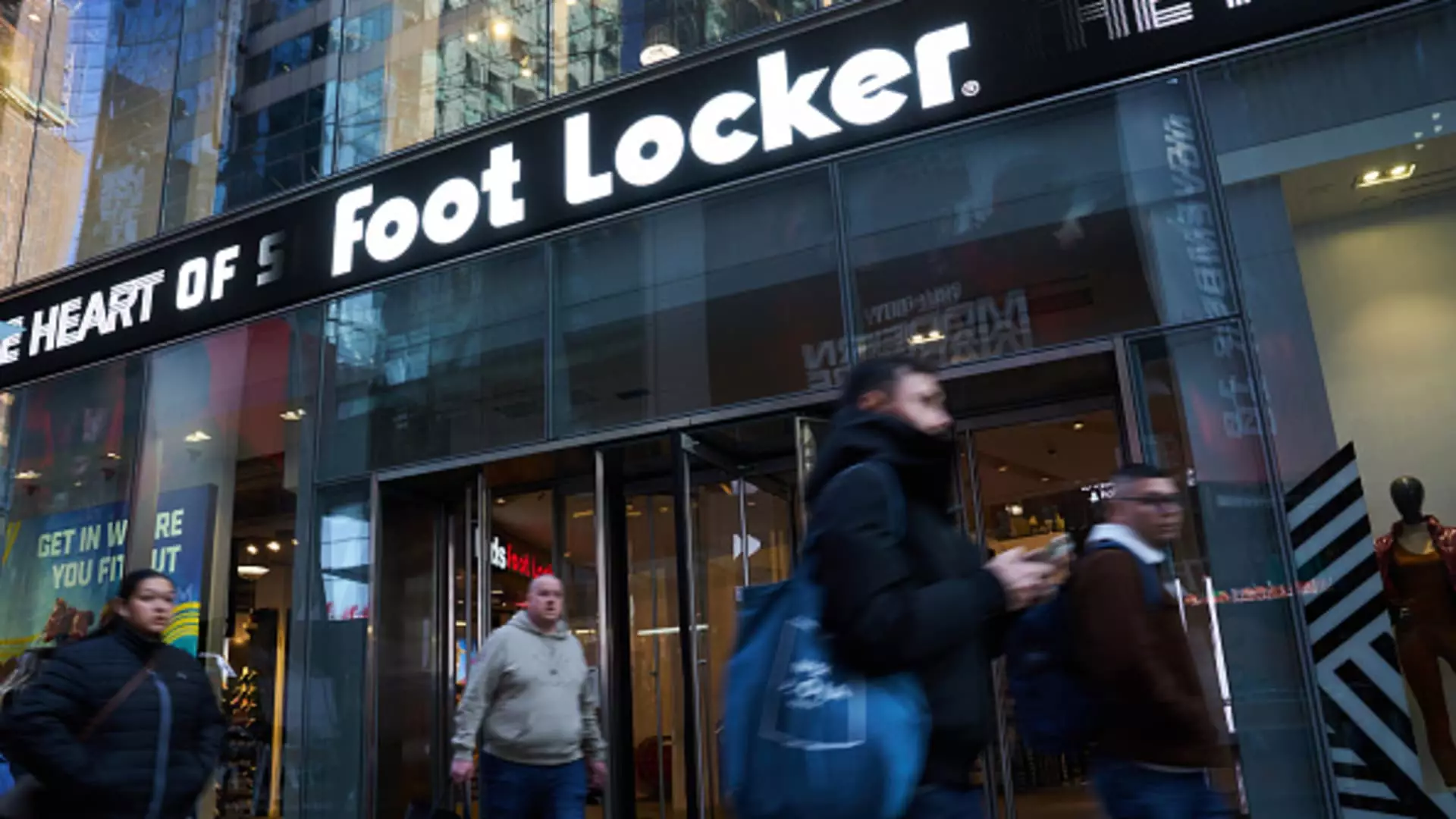Foot Locker’s recent announcement of a 2.6% growth in same-store sales during the fiscal second quarter marks a significant improvement for the company. The positive performance is attributed to its ongoing efforts to revamp its stores and enhance the overall customer experience. Additionally, the expansion of the gross margin for the first time in over two years is a promising sign of progress. Despite these encouraging trends, the company’s shares saw an 8% drop in premarket trading, reflecting a potential disconnect between performance and market expectations.
Comparing Foot Locker’s fiscal results to Wall Street estimates reveals a mixed picture. The adjusted loss per share of 5 cents was better than the anticipated 7 cents, while revenue of $1.90 billion exceeded the projected $1.89 billion. The company reported a loss of $12 million for the period ending August 3, with sales increasing to $1.90 billion from $1.86 billion the previous year. Looking ahead, Foot Locker has maintained its guidance for the current fiscal year, expecting sales to range from a 1% decline to 1% growth from the prior year.
Since Mary Dillon assumed leadership at Foot Locker two years ago, the company has undergone significant transformations to stay relevant in a changing retail landscape. Dillon’s focus on strengthening the relationship with key brand partner Nike and upgrading the store fleet to enhance customer experience has been pivotal. The investment of $275 million in store renovations and the collaboration with Nike to develop new megastores signal a strategic shift towards sustainable growth.
Foot Locker’s decision to streamline costs by closing stores and e-commerce operations in certain regions demonstrates a commitment to efficiency. By focusing on markets with growth potential and working with third-party operators, the company aims to consolidate its operational footprint. The planned closure of underperforming stores and the relocation of the global headquarters to St. Petersburg, Florida, underscore Foot Locker’s efforts to maximize operational efficiency.
As Foot Locker continues to prioritize customer experience both online and in-store, it maintains a customer-centric approach to drive sales. Despite challenges such as inflation and high interest rates impacting consumer spending habits, the company’s focus on meeting consumer needs in the sneaker category has led to positive results. By adapting to changing consumer preferences and executing strategic initiatives, Foot Locker remains competitive in a demanding retail environment.
While Foot Locker’s stock performance has been volatile, with shares experiencing fluctuations, the overall trajectory reflects a positive year-to-date trend. In contrast, Nike’s stock has faced challenges, highlighting the importance of effective execution in the retail sector. With a clear strategy in place and a commitment to continuous improvement, Foot Locker aims to build on its current momentum and drive future growth. Mary Dillon’s leadership and the company’s strategic initiatives position Foot Locker for success in the evolving retail landscape.

